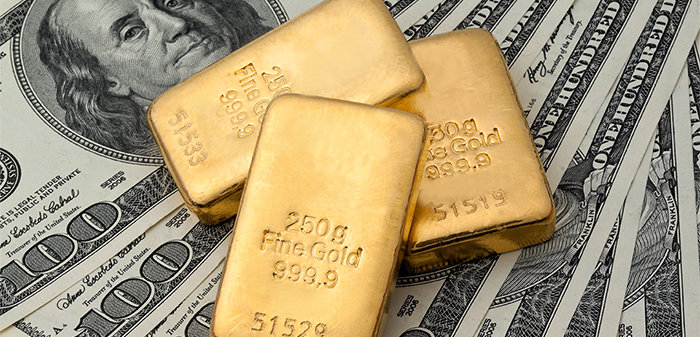My colleague Bill Hall has been telling investors all year to watch just ONE indicator to gauge the path financial markets will take.
That is, the yield on the 10-year U.S. Treasury note. And he’s absolutely correct.
The 10-year has spent this year stuck in a trading range between roughly 2% on the low end, and 2.5% at the highs. Bond market investors have essentially been playing tug-of-war with Treasuries, pushing the bond market back and forth within this range.
On the one hand, they’re concerned about signs of accelerating economic growth. And with it, the threat of inflation. After all, global central banks have engineered a near-zero (and at times sub-zero) interest-rate environment for several years.
And the staggering amount of cheap money sloshing around the global financial system today is potential rocket fuel for inflation.
All that’s needed to ignite it is a lit match.

On the other hand, central bankers have pursued this ultra-easy monetary policy because deflation, not inflation, has been public enemy No. 1 ever since the financial crisis nearly 10 years ago.
A lot of investors today believe interest rates can stay lower for a lot longer. If they’re right, then asset values — especially stocks — can continue skyward. So, we would have nothing to fear from higher Treasury bond yields.
But what if they’re dead-wrong?
The fact is, the world economy is a different place now than during the deflationary financial crisis nearly a decade ago.
Growth has picked up around the world — still at a subpar pace, to be sure. But the rate of change is moving higher. So are inflation measures like consumer and producer prices in the world’s two largest economies: the U.S. and China.
The Chinese have been pumping both monetary and fiscal stimulus into their economy almost nonstop in recent years. And inflation is accelerating. Producer prices in China jumped at a 6.9% annual rate last quarter.
In the U.S. it’s been all about monetary stimulus, with multiple rounds of QE since 2008.
But now the hint of fiscal stimulus is also in the air.
If Washington can get its act together, a massive tax-overhaul plan could soon pass. One that includes trillions in cash held overseas by U.S. corporations coming home at a reduced tax rate.
Defense and infrastructure spending are also high priorities.
Related story: The government is spending $3 trillion on cybersecurity alone.
Another, more fundamental factor, has changed for the Treasury bond market, too: simple supply and demand.
Until recently, the Fed was the buyer of last resort for Treasury bonds. But the Fed ended its bond-buying scheme nearly three years ago. And now, it’s starting to cash in some of its bonds.
This means less demand for Treasury bonds from their biggest buyer in recent years.
Meanwhile, the issuance of new Treasury debt is set to accelerate in November, December and beyond, to fund Washington’s fiscal spending spree.
Less demand, plus more supply is likely to put additional selling pressure on Treasury bonds. This points to higher yields.
And next year, the Fed plans to drain even more cash from the bond market. It aims to reduce its bloated balance sheet of Treasury and mortgage-backed securities by $50 billion a month by this time next year. That’s up from $10 billion a month in redemptions now.
Bottom line: Expect the 2.5% line in the sand for Treasury yields to be shattered sooner rather than later, with the 10-year yield likely to shoot up to 3% and beyond.
When that happens, the stock market will surely take notice of this new and more-hostile interest-rate environment. And investors won’t like what they see!
Good investing,
Mike Burnick



robert bonaventure November 3, 2017
Hi Mike,
As I said to Martin, Don’t be shocked if yeilds stay stuck VERY low and prices remain high. I don’t believe for a nano second that the central banks in the developed world are going to sit back and watch the cost of servicing their massive debt loads become unaffordable by bond market trading. My money is they will suck up all excess liquidity in treasuries and keep those yields in the basement. It’s the only way they can continue doing business as usual and let’s face it; They’ve been getting away with it for years now and the markets are not calling them out on it. They just won’t tell us.
Edward Mack November 1, 2017
What if…. That’s what we always hear. So what. What do you recommend we do- sell stocks, buy treasuries, and if so, which ones?
Dick Torre November 1, 2017
What about the flood of cash expected from EU flight to safety, followed by a wave of Japanese capital seeking the tallest Pygmy despite the recent run-up of the Nikki.
Wouldn’t the anticipated influx mute upward rate movements in the 10 and the 30?